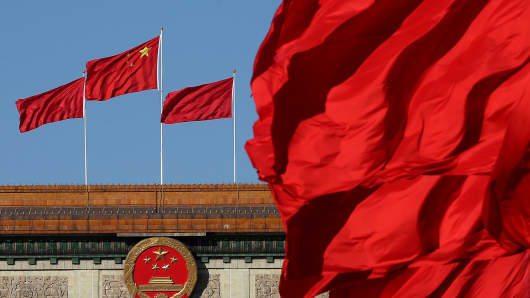Asia's large capital inflows are not a one-week wonder. The stellar performance of the region's equity markets last week is just an acceleration of the existing trend.
The key stock market index for Asia is up 10.2 percent since the beginning of the year (compared with 2 percent for the Dow and 0.5 percent for the euro area),and a whopping 19.3 percent over the last twelve months (compared with 13 percent for the Dow and 10 percent for the euro area).
And Asia looks like it is just warming up: Its key equity markets gauge is trading at about 13 times estimated earnings, compared with P/E ratios of 16 and 15 in the U.S. and Europe, respectively.
Read MoreChina new home prices fall for a third month in July
Can Asia's equity prices sustain this remarkable climb? I believe they can.
Some of Asia's asset price gains will come by default.
Europe– to quote Hungary's Prime Minister Viktor Orbán – continues to "shoot itself in the foot" with a sanctions war it can't win, while Germany keeps obstructing every attempt to stimulate the euro area out of a quasi recession and a devastating unemployment. The German economy, its vice-chancellor says,will soon be pulled up by rising exports (to Asia, no doubt). These are great examples of European mismanagement and of a total lack of solidarity.
Read MoreAsia week ahead: Japan trade, China flash PMI
On the other side of the Atlantic, fears are growing about America's fully valued equity markets. Investors are anticipating rising interest rates and disappointing profits in a sluggish economy.
These two "defaults" will probably get more prominent in the coming months. But Asia's investment inflows will be mainly motivated by well-founded expectations of higher returns.
China, India and Indonesia
If you discard long-standing – and totally wrong – warnings about China's collapsing economy, you will easily conclude that with a growth rate of 7-8 percent the Middle Kingdom will remain a formidable engine of regional economic development. The growth-focused India and a reassuringly well-managed South Korean and Indonesian economies will also contribute to Asia's steady upswing in the years ahead.
Read MoreDays of 6-7% growth look distant for Indonesia
These four Asian countries account for 26 percent of global gross domestic product(GDP).
This number simply means that Asia has a large growth potential in intra-regional trade,with a perfectly solvent demand from countries that have a long way to go to catch up with the rest of the developing world.
India seems to me a particularly promising investment destination. The country's new leadership is firmly focused on better economic management, with emphasis on infrastructure, food security, education and healthcare. The central bank and the finance ministry now appear to be working with greater mutual support and understanding than in the past, and India's present readings of internal and external balance provide good initial conditions for further improvement.
Read MoreIs this the answer for India's dilapidated real estate market?
China and Japan are likely to step up their investments in India. That will help to close India's savings-investment gap (estimated at about 2-3 percent of GDP) with stable long-term funds instead of relying on short-term capital inflows. If properly channeled, these Chinese and Japanese investments could also speed up infrastructure improvements, relieve some supply bottlenecks and significantly raise India's economic efficiency.
India's emphasis on a peaceful and friendly neighborhood – i.e., relations with China and a broader "Indian world" -- could also yield economic dividends.
Indonesia, the largest Southeast Asian economy, has similar problems of poor infrastructure, especially in power generation and power transmission.




